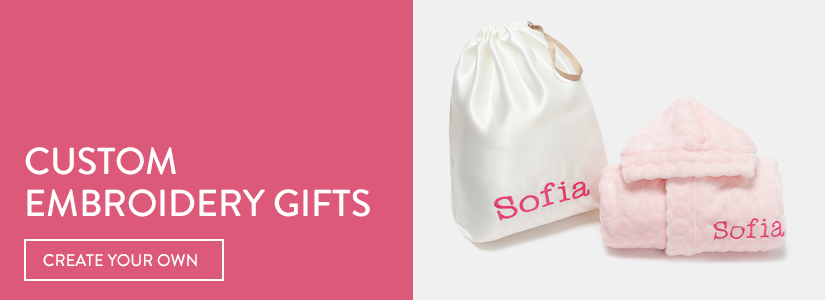Embroidery has been around for centuries, allowing for many different types of embroidery to form. Popular all across the globe, embroidery has grown from an essential skill to an art form.
Different countries found a variety of ways to make embroidery their own. From different techniques, fabrics and embellishments, embroidery began to evolve. Here we will discuss a few different types of embroidery and what makes them unique.
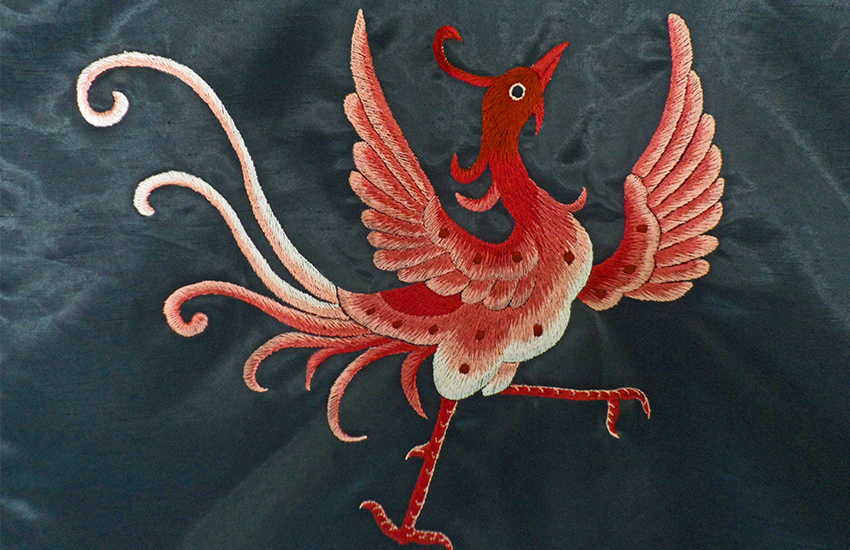
Kantha Embroidery
What is Kantha embroidery? Comprised of the simplest stitch: the running stitch, Kantha translates to rags. Traditionally used to join together old saris in order to make quilts, it was a form of self-expression for the women of Bangladesh.
There is an ancient legend that links to Kantha. It says that Lord Buddha and his disciples covered themselves with garments made from discarded rags that had been patched and sewn. The oldest examples of Kantha available date back to the early 1800s. However, its origin goes back all the way to 1500 BCE.
Many external factors like material availability, needs, climate, geographic and economic factors have influenced Kantha. In a way, it was a home-based way of recycling by giving life to old rags.
This form is all about tradition. In rural villages, the women of almost every household would spend their free time working on their Kanthas. However, between their daily tasks, it could take months or even years to stitch a complete Kantha. They could be handed down through generations, with grandmothers, mothers and daughters all working on the same Kantha.
Ancient Chinese Silk Embroidery
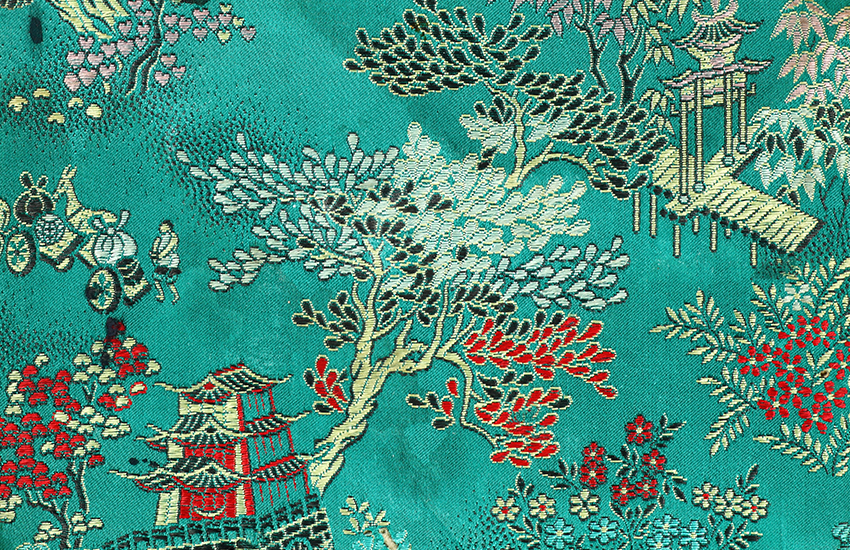
Chinese silk embroidery became domesticated 5,000 years ago. This type of embroidery uses a variety of stitch styles as well as a range of time-honoured designs. These designs consist of motifs depicting flowers, birds, and beautiful animals. as well as abstract and geometric patterns.
Chinese embroidery has 4 distinct regional styles: Shu xiu, Su xiu, Xiang xiu, and Yue xiu.
Shu xiu embroidery features mostly natural-world motifs. Tightly stitched and perfect for mixing threads, it normally features soft, satin fabric with vibrant thread colours.
Su xiu uses naturalistic colours. Influenced by Japanese and Western art and extremely refined, it creates a tasteful design on both sides. The reverse side is a mirror image of the front.
Xiang xiu emulates other art forms such as paintings. It is produced on both sides. This embroidery creates a satin look as the surfaces are beautifully smooth. Humans, birds, animals, and landscapes are typically the focus of these pieces. They use just a few colours to create bold and simple designs.
Yue xiu has three main characteristics. The first being that it is not concerned with creating the illusion of depth. The second is the motifs of mythical creatures such as dragons and phoenixes. This technique often uses cotton rather than silk.
Aari Work
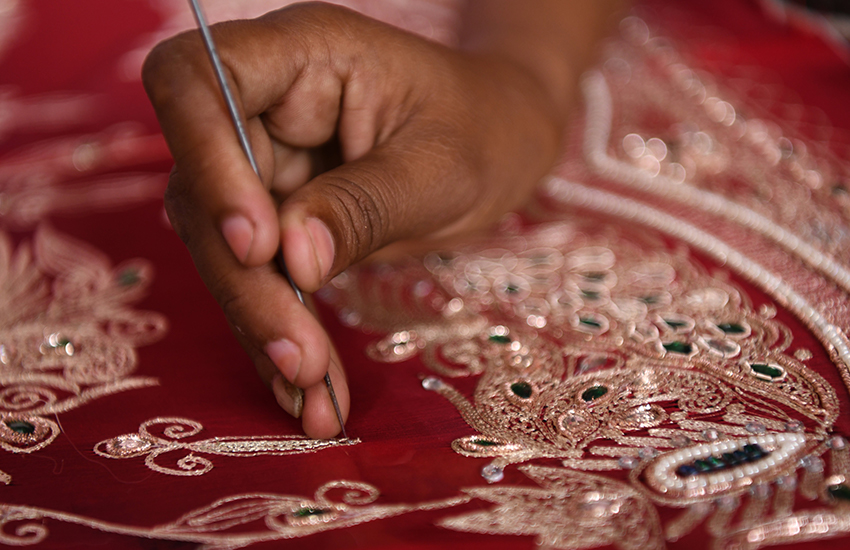
Origins of Aari work date back all the way to the 12th century. Developed by leather workers in Gujarat, west India, Aari was primarily used to embellish footwear. This work derives its name from the long needle used. This needle is long in length, with a hooked end, named Aari. Skilled workers use this work to elevate the famous silk sarees in the south.
Aari work uses beads, stones, gold and silver thread, giving the design a real richness. Intricately placed to create a sparkling effect, embellishments add depth and richness to a simple embroidered piece.
This technique requires a huge amount of skill and training, as the process is both precise and time consuming. They have to ply at a consistent pace, and ensure the stitch is the same size and in the correct position.
Kasuti Embroidery
This form of embroidery originated from Karnataka in India. Using simple stitches, these intricate designs produce stunning results. This is a counted thread technique. It is designed to look the same on the front and the back, so no knots should be used at the beginning and end of the stitch.
The most popular Kasuti pattern is the lotus flower. But many other natural patterns such as flowers, animals, and shells are also popular.
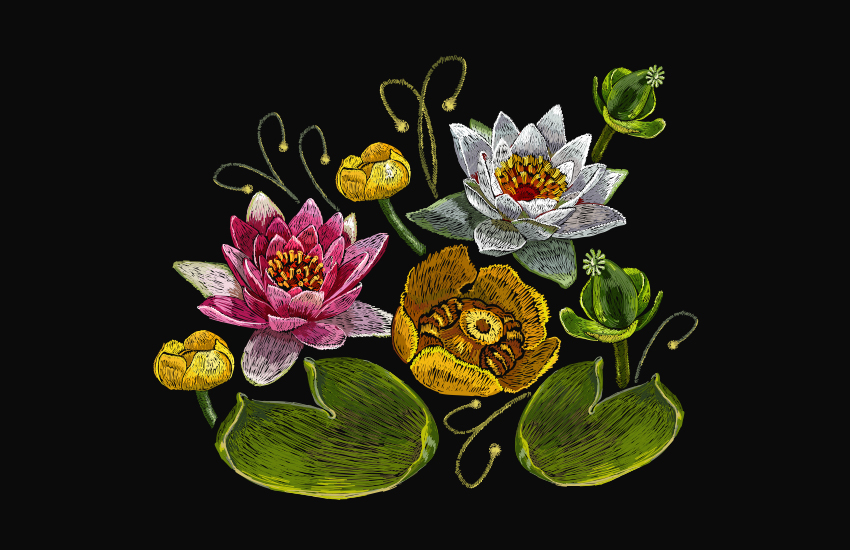
Modern Day Embroidery
At Bags of Love, we use the latest embroidery machines to create your custom embroidered gifts. It’s the modern way to achieve beautiful embroidery quickly, guaranteeing wonderful results are achieved every time.
So if you or a loved one are a lover of embroidered goods, head to Bags of Love to explore our range of bespoke embroidered gifts. Out of all the different types of embroidery, we can guarantee we will be your favourite.
